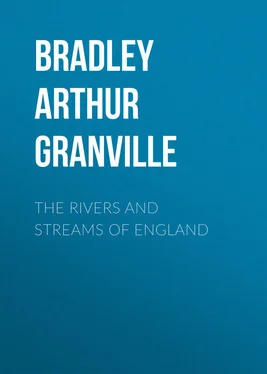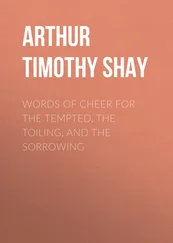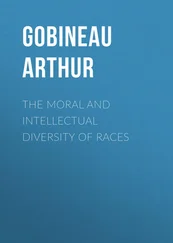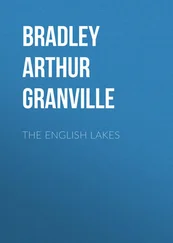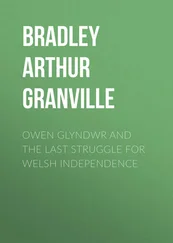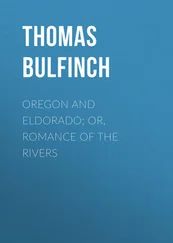Arthur Bradley - The Rivers and Streams of England
Здесь есть возможность читать онлайн «Arthur Bradley - The Rivers and Streams of England» — ознакомительный отрывок электронной книги совершенно бесплатно, а после прочтения отрывка купить полную версию. В некоторых случаях можно слушать аудио, скачать через торрент в формате fb2 и присутствует краткое содержание. Жанр: foreign_language, foreign_antique, foreign_prose, Путешествия и география, на английском языке. Описание произведения, (предисловие) а так же отзывы посетителей доступны на портале библиотеки ЛибКат.
- Название:The Rivers and Streams of England
- Автор:
- Жанр:
- Год:неизвестен
- ISBN:нет данных
- Рейтинг книги:3 / 5. Голосов: 1
-
Избранное:Добавить в избранное
- Отзывы:
-
Ваша оценка:
- 60
- 1
- 2
- 3
- 4
- 5
The Rivers and Streams of England: краткое содержание, описание и аннотация
Предлагаем к чтению аннотацию, описание, краткое содержание или предисловие (зависит от того, что написал сам автор книги «The Rivers and Streams of England»). Если вы не нашли необходимую информацию о книге — напишите в комментариях, мы постараемся отыскать её.
The Rivers and Streams of England — читать онлайн ознакомительный отрывок
Ниже представлен текст книги, разбитый по страницам. Система сохранения места последней прочитанной страницы, позволяет с удобством читать онлайн бесплатно книгу «The Rivers and Streams of England», без необходимости каждый раз заново искать на чём Вы остановились. Поставьте закладку, и сможете в любой момент перейти на страницу, на которой закончили чтение.
Интервал:
Закладка:
for local use. A region whose hidden charms are for the stout pedestrian alone, but have remained so far undiscovered even by him, for practically no human form but the Welsh-speaking sheep farmer on his pony or some more than commonly adventurous angler or occasional grouse shooter ever breaks upon the solitude of this far-reaching mountain waste even in mid-August. This barrier, so broad, so lofty, and so long, which counted for so much in Welsh history, was known by the men of old as “the mountains of Ellineth.” They have now no composite name, and there is not a range in Britain needs one more. It is as if Dartmoor and Exmoor, which could be together dropped into this other one, each lacked a concrete designation.
The Wye draws little further on this watershed, till after 20 miles of wandering in the wilderness, growing gradually less savage, and playing all the tunes and chords known to little trout streams amid the pastures of Llangurig, it meets the Marteg and the Elan, near Rhayader, and begins to take itself seriously. This indeed is the real beginning of the Wye, for most of those who know its upper reaches. For here it achieves maturity and enters the world; and a beautiful world too, of waving woodlands and overhanging mountains, but one which many pass their lives in and others visit, and traversed by a good valley road and a railway. The Elan but a few short years ago came from the west out of this Ellineth wilderness, bringing with it the waters of the Claerwen through a deep vale, unforgettable by those who knew it for the exquisite combination of luxuriant low ground and the fine grouping of its overhanging mountain walls. If Cwm Elan was retired from the world in the ordinary sense, it is a familiar enough name to all students of Shelley, whose cousins then owned it, and who himself settled here for a time with his young, hapless, and ill-suited wife. The hills and crags, however, that inspired the poet’s earliest muse,
Those jagged peaks that frown sublime,
Mocking the blunted scythe of time,
look down now upon far different scenes, though perhaps in their way not less lovely ones. Deep waters now glimmer from hill to hill where the Elan ran but yesterday through wood and pasture to join the Wye; and yet deeper into the hills, where the Claerwen leaped from the wild into this now submerged Arcadia, is another lake, thus laying both the main stem of the valley and its forks under the same vast sheet of water. If this chain of lakes is the work of the Birmingham Corporation and not of Nature, they are of this last at any rate a good imitation, and reflect upon their bosoms no shadows less harmonious than those of the everlasting hills.
The Wye is a delightful river from its source to its mouth; scarcely a suggestion of industrial defilement comes near it anywhere. The, in this respect, utterly guileless Cathedral town of Hereford is, indeed, the only place above the scale of a small market-town within touch of its banks. Everywhere, even between the rapids, the river itself is instinct with the sense of buoyancy. After leaving the Black Mountains above Hereford it becomes at intervals for pleasure-boats a navigable stream; but till it leaves Wales it has all the boil and rush and stir of a salmon river. It is easy to pick out those sections of the Wye, charming as they are in a quiet, pastoral, Severn-like fashion, which are the least distinguished. And that they form collectively much the smaller portion of a river running a course of 130 miles, says something for its qualities. The Wye divides itself readily into four distinct stages. The first, its infancy as a mere mountain stream to Rhayader; the second, its course thence for some 30 odd miles as a considerable river fretting in a rocky channel, and pressed between the heavily-wooded feet of hills and mountains, to Boughrood with a few reaches more of less violent perturbation, but imposingly guarded by the Black Mountains, to Hay or Clifford. The third stage may be reckoned as covering the rich and broken low country of Herefordshire; while the fourth begins near Ross, where the river enters that series of magnificent scenes which, opening with Symond’s Yat, continues for above 30 miles, past Monmouth to Tintern, the Wyndcliff and Chepstow, maintaining a standard of beauty and grandeur altogether above the scale that you would look for, even in the more than pretty region through which it cuts its way. It is by means of this lower stage that the Wye seems to defy a rival; for as regards its upper reaches between Rhayader and Hay, beautiful as they are, the Dee through the vales of Edeyrnion and Llangollen, the Usk between Brecon and Abergavenny, the North Tyne, and one or two Yorkshire rivers, could show 30 miles of as noble a torrent, equally beautiful in environment. But none of these rivers, after they have abandoned their highland glories and settled down into the comparative quiet of the low country, wake again as they near the sea as the Wye awakes, and repeat, though with a difference of detail that is the more charming, the glories of their prime. Which of the two sections of the Wye is the more beautiful it would be ill saying. Their contrast, happily, makes comparison foolish. No other English river of any size can offer at once such a spectacle as Symond’s Yat on the Wyndcliff, near its mouth, and the long gorge between Aberedw and the Epynt in its higher reaches.
This it is which crowns the Wye as fairest of English rivers by a practically indisputable title. So, carrying thus the Elan and the spare water of its many lakes with it, the Wye thunders on in rocky channels or heaves in wide swirling pools, beneath woods of oak and ash and larch, with the green or purple crests of the great hills looming high above. Plunging past Doldowlod and Llysdinam it receives the sprightly Ithon, which, born in the Kerry hills and gathering in its course half the waters of Radnorshire, has twisted between its red crumbly banks with much sound and laughter through 50 miles of that most delectable little county. Dividing Brecon here from Radnor, two unknown shires that outside North Wales and the Lake District it would be hard to match, counted as one, for their high qualities of form and detail, the Wye rages down those jagged stairways known as “Builth rocks,” and noted as a famous stretch of salmon water. Here on the western bank a large tributary, and itself at times no mean salmon river, the Irfon comes pouring in its amber bog-fed streams. Born far away in the very heart of the high moors, within hail of the resounding struggles of the infant Towy in the gorges of Fanog; cradled in unvisited hollows beneath raven-haunted crags of old Silurian rock; fretting amid the lush bracken glades and indigenous mountain oaks of Abergwessin and “the steps of the Wolf,” this bewitching stream drives downward through a rich and narrow vale encompassed by lofty hills, till, fuller by a half-score of mountain brooks, it meets the Wye near that historic spot where Llewelyn the Third, the last Prince of Wales, fell in battle at an unknown soldier’s hand.
Flowing under the many-arched stone bridge of Builth, that ancient little mart of sheep and cattle, and receiving the Edw from Radnor Forest, the Wye now enters on perhaps the most inspiring of all its upper reaches. For here on the Radnor shore the bold ridge of Aberedw lifts its
rock-plated sides some 1200 feet above the fretting river which upon the Brecon bank chafes the green and woody feet of the high sheep-walks of Epynt. What makes, too, for the exceeding beauty of these particular reaches of the Wye is not alone the lofty hills which press upon its here tempestuous streams, but the further fact that every downward view of the river has for a background the line of the Black Mountains waving at a great height against the skyline. Breaking at length out of its own pent-up channels, and turned back by the formidable barrier before it, which protects the vale of Usk, the Wye now swings to the east and down the broader meadowy vales of Glasbury and Hay; the Black Mountains of Brecon looming high and abrupt on the right, the Radnor moors rising more gradually upon the left, each bank from time to time ornate with some country-seat set back against the base of the hills. This is the spot to remind the reader, if such be needed, that the Wye is a famous salmon river, and that its fish, unlike those of the Severn, share the normal habit of all other salmon, mysterious and unaccountable though that instinct be, of rising in more or less capricious fashion to what we facetiously call, and the salmon most certainly does not consider to be, a fly. The upper or rockier portion from Rhayader to Glasbury is perhaps the best of the river, but all the way down, till it meets the tide at the proper and appointed casts, the Wye is a true salmon river in the angling sense of the word. To discuss its ups and downs, or to dwell upon the tribulations that this one in common with most salmon rivers has experienced in some recent years, is not our province. But the Wye is cursed with the pike, a gentleman that the salmon loathes – not, of course, like the trout, from bodily fear, but he shuns his presence and neighbourhood as a fastidious mortal moves from a neighbourhood invaded by vulgarians. The Llyfni comes with slowish current into the Wye above Glasbury from the neighbouring reedy lake of Tal-y-llyn, otherwise Savaddan, set like a gem in the rich basin between the Brecon beacons and the Epynt Hills, and it is by this route that the unwelcome aliens are said to make their entry. The Wye is also a trout river from its source to near its mouth, though of vastly varying quality, which we need not dwell on here. But in its mountain reaches two generations ago, if the local grandfather is veracious, it was equal to the Usk or Dee or Teify. These halcyon days till you get well above Builth are no more; for not only pike but the chub has pushed in, and in pellucid rocky pools where he has no business whatever, you may now have as fine fly-fishing for chub as anywhere probably in Great Britain. But the trout whose native and perfect haunt it is, has retired a good deal into the background. He exists, to be sure, everywhere, and may with luck be caught anywhere, but the fisherman can no longer as of yore wade up the rapids of Erwood or Aberedw and kill his 10-lb. basket, on a good day, with fly, though he may take a few on a minnow.
Читать дальшеИнтервал:
Закладка:
Похожие книги на «The Rivers and Streams of England»
Представляем Вашему вниманию похожие книги на «The Rivers and Streams of England» списком для выбора. Мы отобрали схожую по названию и смыслу литературу в надежде предоставить читателям больше вариантов отыскать новые, интересные, ещё непрочитанные произведения.
Обсуждение, отзывы о книге «The Rivers and Streams of England» и просто собственные мнения читателей. Оставьте ваши комментарии, напишите, что Вы думаете о произведении, его смысле или главных героях. Укажите что конкретно понравилось, а что нет, и почему Вы так считаете.
